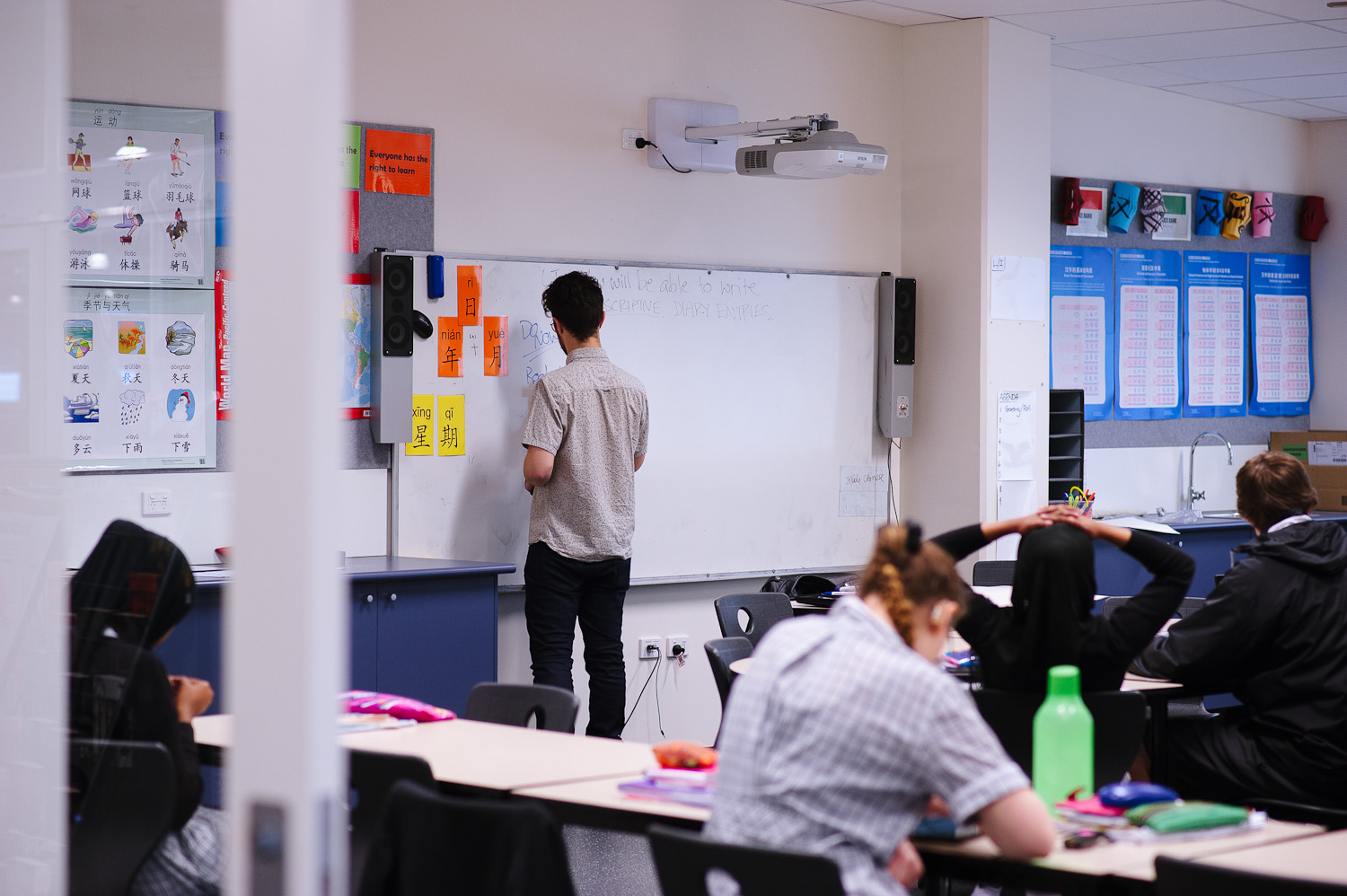Skip to:
- Give Today
- Contact Us
- Media
- Search
News & Stories
Leadership Development Program
Undergraduate Teaching Program
Common search terms
During my planning periods at school I could barely manage to get any work done. Mostly, I blame Mr. Mankowski.
He was the Philosophy teacher whose room – which he had taught in for the best part of 15 years – bordered my office.
He was a booming, politics-over-sport, toothy laughter sort.
His teaching consisted of three ingredients: his whiteboard, an armful of esoteric non-fiction and an abundance of knowledge – borne of both books and experiences.
In his first class of every year he would launch into a splattering, fast-paced diatribe about his name and how he preferred ‘Womankowski’ and how everyone should find themselves a ‘damn good psychoanalyst’ and how the education system ‘was as devoid of sustenance as a piece of white bread’.
He often said that if he met the Dalai Lama he would kick him hard in the ankle.
Students would leave his classes dazed and inspired, and I would have wasted an hour doing nothing but listening to him whilst staring at a pile of marking. I wanted to be in his class — I wanted to watch how an experienced, eccentric and excellent teacher taught.
I’ve often felt a pull towards the classrooms of other teachers. I am drawn equally to the experience of teaching as I am to the voyeurism of observing other teachers.
I would find sneaky excuses to visit my colleagues’ classrooms. I gravitated towards the teachers whose practice I respected and I used whatever tactic it took to get a glimpse inside their classroom.
At the same time, I also wanted to observe what was occurring in classrooms known for their chaotic and, at times, dysfunctional nature.
I wanted to sit myself at the back of every classroom in my school. Not coach, not advise and certainly not judge – just watch, closely and reflectively.
Teaching is so frequently a cloistered experience.
We hide ourselves behind the sliding doors of our classroom and share our best teaching with our students alone.
Knowledge of our fellow teachers is predominantly founded upon the grapevine of student perspective, and a collated pastiche of fleeting observations: a moment where a teacher is being excellent with a disengaged student, an image of a calm and productive classroom snatched when walking down a corridor, a snippet of a conversation a colleague is having with a parent on the communal phone in the staffroom…
This is how we come to know our fellow teachers and this is how they come to know us.
We plan and prepare collaboratively, but for the most part, our actual practise of teaching is removed from the view of other teachers.

I’ve come to wonder: How can we become exceptional teachers if we don’t observe teaching?
And how can we deeply reflect on our own teaching if we don’t welcome the expertise of our colleagues into our classes?
If I calculated the amount of hours I have spent in front of a class compared to the hours I have spent observing a class, the difference is a clear indictment of a teaching load, and systematic structures that do not provide time for observation.
Beyond time spent as a Teach For Australia Associate or pre-service teacher, it is infrequent for teachers to be a fly on the wall in other teachers’ classrooms. Once a graduate teacher, this sharing of the classroom is swiftly discarded.
The early stage teacher is sent off to the confines of their own classroom and are denied access to the best professional development available: consistent opportunity to watch teachers in the act of authentic teaching.
I believe that teacher quality would increase, significantly, if teachers had more opportunities to both observe and be observed.
Watching other teaches acts as a mirror from which we can reflect our own practise.
And being watched provides another set of eyes through which we can evaluate our efficacy, demonstrate our successes, and bounce our inner critic off.
So what does this require?
It requires teachers who are willing to throw open the doors to their classrooms and not just welcome their colleagues, but actively seek out their perspective, thoughts, reflections and at times even criticism.
And to the teachers extended this invitation, leave your judgements, criticism and ‘I wouldn’t do it that way’ perspective at the door.
It’s a privilege to be permitted to watch your colleague teach: they are giving you the opportunity to improve your teaching – therefore, be generous in your observations.
Most of all, a culture of shared practice requires teachers who authentically value the teaching and the perspectives of their fellow teachers.
In hindsight I should have stopped wasting time sitting at my desk listening through the walls and cooking up excuses to visit the classrooms of my colleagues.
Instead, I should have asked for permission to be that generous pair of eyes situated in an inconspicuous corner of the room.
So, fellow teachers (and non-teachers!), when I am teaching again, I invite you to come to my class; my door is always open – you are welcome to be the fly on my wall.